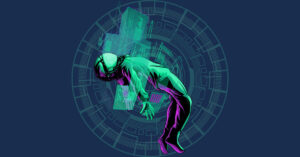Learn how to digitize artwork the right way using scanning or photography. This guide explains the full artwork digitization process, the equipment you need, DPI settings, color correction tips, and how to prepare digital files for print and online use.
Digitizing artwork is essential for artists who want to preserve, print, share, or sell their work online. Whether you create watercolor pieces, pencil drawings, ink illustrations, or paintings on canvas, knowing how to digitize artwork properly ensures your digital files look as close to the original as possible. This guide breaks down everything you need to know about digitizing artwork, from scanning to photographing to editing and exporting high-quality digital files.
What is Artwork Digitization and Why Does It Matter?
Artwork digitization is the process of converting physical art into a digital file. This allows you to archive, print, upload, or edit your artwork without damaging the original piece. Digitizing artwork also protects your work from wear, fading, or physical loss while making it easier to share on websites, online shops, and social media.
Digitizing artwork matters because:
- It preserves fine details long-term
- It enables high-quality prints and reproductions
- It allows you to sell digital versions of your art
- It simplifies online portfolio building
- It gives you professional control over colors and quality
Scanning vs Photographing: Choosing Your Digitization Method
When learning how to digitize artwork, the first step is selecting the right method.
Scanning is best if:
- Your artwork is flat
- The size fits on a scanner bed
- You need high resolution and clean detail
Photographing is best if:
- Your artwork is larger than a scanner
- You work on textured surfaces like canvas
- You need more flexibility with lighting
Both methods work well if executed correctly. Many artists use a combination depending on the piece.
Essential Equipment for Digitizing Artwork
You don’t need overly expensive gear, but quality equipment makes a noticeable difference.
Scanning equipment
- Epson V600 scanner or similar flatbed scanner
- Canon CanoScan models
- Clean a microfiber cloth for the scanner bed
Photographing equipment
- DSLR or mirrorless camera (or a high-quality smartphone)
- Soft lighting setup or natural sunlight
- Tripod for stability
- Neutral background
Editing tools
- Photoshop or Adobe Creative Suite
- GIMP (free alternative)
- Lightroom for color adjustments
Understanding DPI, Resolution, and Color Modes
Proper settings determine the clarity and accuracy of your digital file.
- 300 DPI is ideal for printing
- 600 DPI works well for detailed pencil or ink drawings
- 72 DPI is used for web-only images
Color modes:
- RGB for digital use
- CMYK for print output
Choosing the right DPI and color mode is one of the most important steps in digitizing artwork.
Step-by-Step Guide to Scanning Artwork
If your piece fits on a scanner, scanning produces clean, high-resolution images.
- Prepare your artwork
Make sure the surface is dust-free and flat. Remove smudges or loose pencil marks. - Clean the scanner bed
Any dust will show up in the final digital file. - Scan at the correct DPI
Use 300–600 DPI depending on the detail level. - Select the right color mode
Choose RGB for digital and CMYK for print. - Save in a high-quality format
TIFF or PNG is recommended before editing. - Repeat scans for large pieces
You can stitch multiple scans together later.
Photographing Artwork: An Alternative to Scanning
For bigger pieces or textured surfaces like canvas paintings, photographing the artwork works better.
Tips for photographing artwork:
- Use bright indirect natural light or softbox lights
- Keep your camera parallel to the artwork
- Use a tripod to avoid blur
- Avoid shadows and glare
- Place your artwork against a neutral background
Shoot multiple images and pick the clearest one with the best color accuracy.
How to Clean and Edit Digitized Artwork in Photoshop
Editing is a key part of digitizing artwork. This step ensures your digital file looks clean, accurate, and professional.
Common corrections include:
- Cropping and straightening
- Adjusting brightness and contrast
- Removing dust spots and scanner lines
- Enhancing fine details
- Correcting white balance
- Using curves and levels for color accuracy
- Removing paper texture if needed
Photoshop gives you full control when preparing digital files for print and online display.
Preparing Large Artwork for Digitization
Large paintings and illustrations may require:
- Photographing instead of scanning
- Scanning in multiple sections
- Using image stitching tools like Photoshop’s Photomerge
- Adjusting the lighting to avoid shadows on the canvas texture
Big artwork can still be digitized with excellent quality when done carefully.
Color Correction and Adjustment Techniques
Color accuracy is crucial when digitizing artwork, especially for artists who sell prints.
Helpful techniques include:
- Using the Levels tool to fix exposure
- Adjusting Hue/Saturation for tone accuracy
- Balancing highlights and shadows
- Using a color calibration card during photography
- Matching digital colors to the physical piece under daylight
These adjustments help your digital file match the original as closely as possible.
Digitizing Different Types of Artwork
Different media require slightly different approaches.
Watercolor paintings
- Scan at 300–600 DPI
- Use gentle contrast adjustments
- Remove the paper texture carefully
Pencil drawings
- Higher DPI captures fine lines
- Clean background for a crisp finish
- Adjust levels to enhance pencil marks
Ink drawings
- Avoid oversharpening
- Use threshold adjustments sparingly
Canvas paintings
- Photograph under even lighting
- Avoid glare from varnish
- Capture texture without overexposing
Best Practices for Professional Artwork Digitization
Follow these guidelines for consistently high-quality results:
- Keep lighting consistent
- Use high resolution for every piece
- Save master files in TIFF format
- Export separate versions for print and web
- Back up your files regularly
- Avoid compressing files too much
Common Mistakes When Digitizing Artwork
Avoid these errors to maintain quality:
- Scanning at low resolution
- Photographing with uneven lighting
- Using JPEG too early in the process
- Editing colors without calibration
- Overediting until the artwork looks unnatural
Tools and Software for Artwork Digitization
Popular tools include:
- Adobe Photoshop
- Adobe Lightroom
- GIMP (free)
- Affinity Photo
- Scanner software like Epson Scan
These programs help you finalize your artwork for printing, sharing, or selling.
Conclusion
Learning how to digitize artwork properly allows artists to protect their work, create professional portfolios, sell high-quality prints, and build an online presence. With the right tools, correct DPI settings, and clean editing techniques, any artist can digitize artwork with clarity and precision. Digitizing artwork is a valuable skill that supports both creativity and long-term artistic growth.






